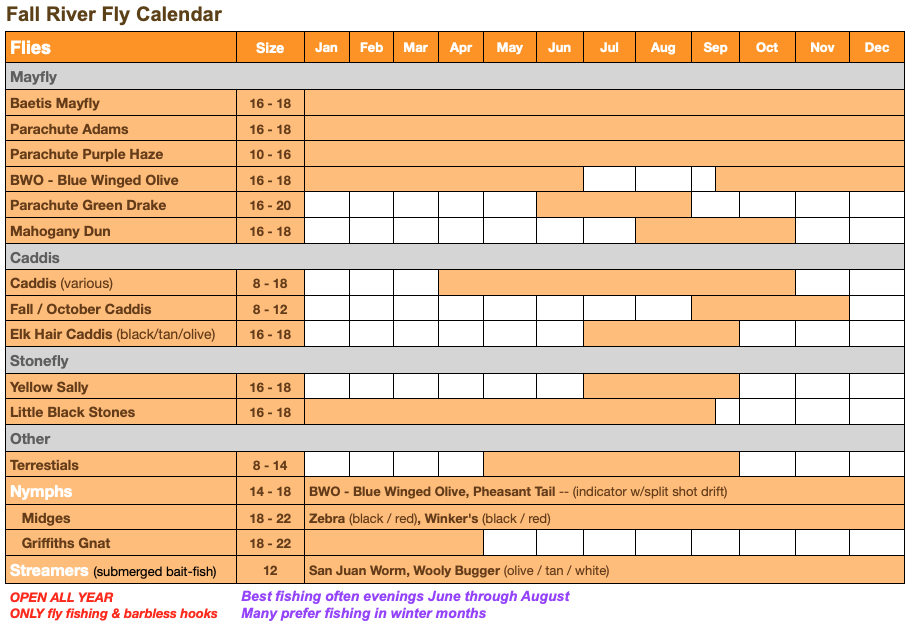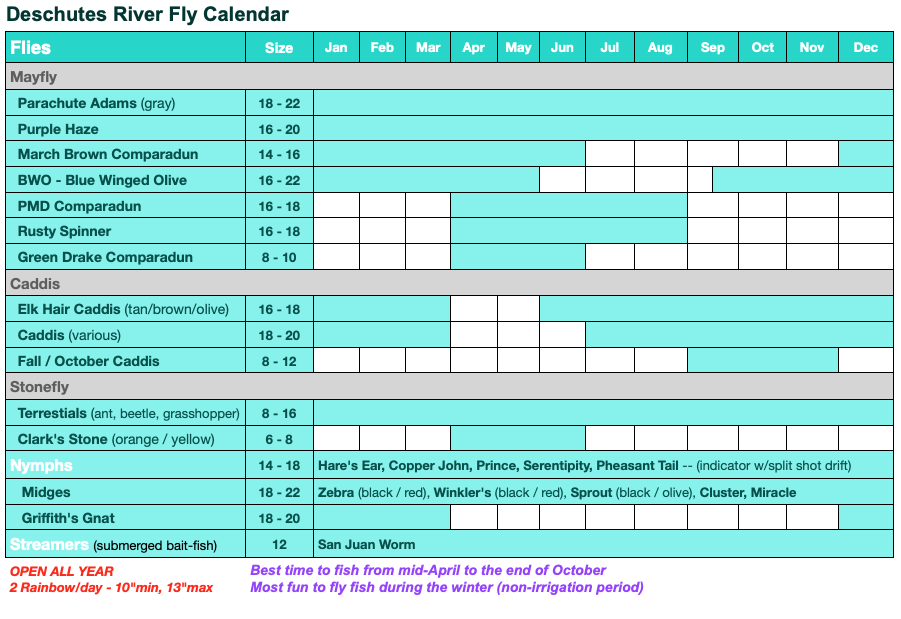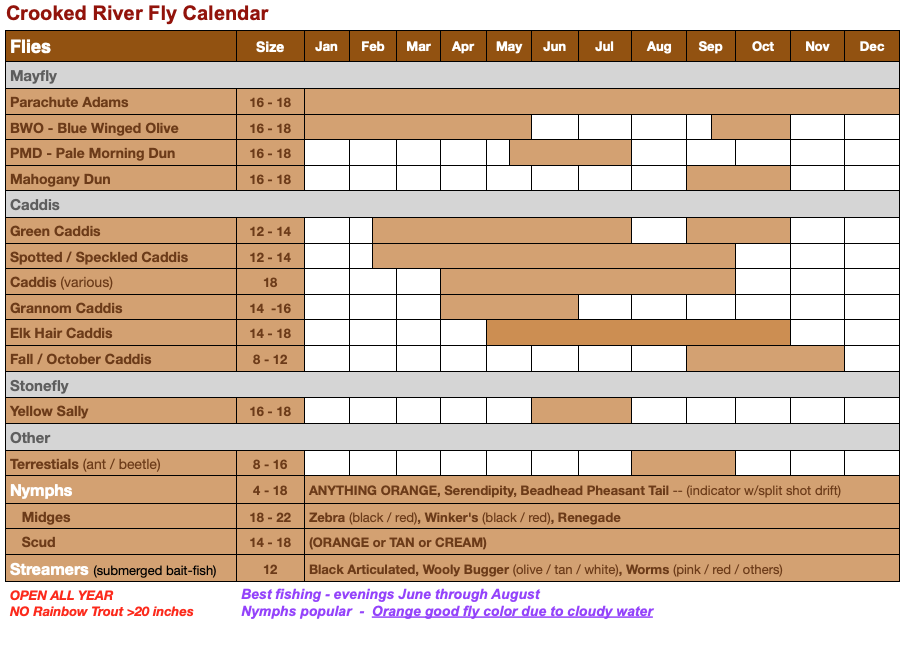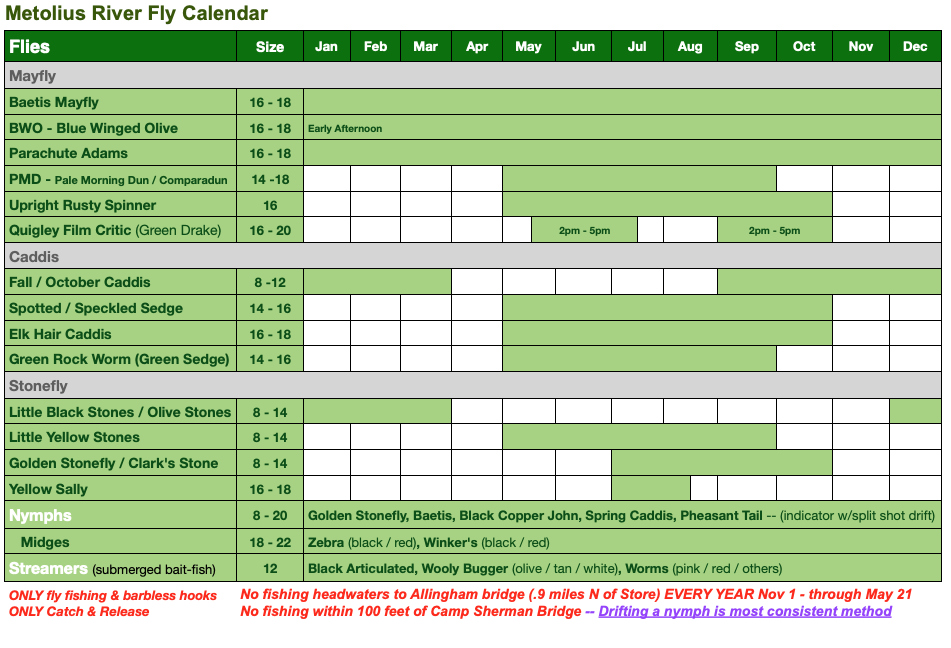Common Central Oregon Water Bugs BACK TO TOP
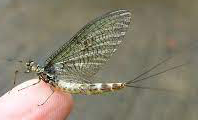
Mayfly
|
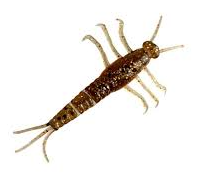
Mayfly Nymph
|
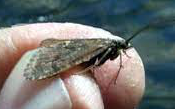
Caddis
|
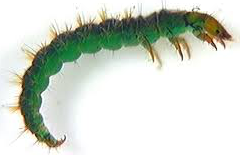
Caddis Nymph
|
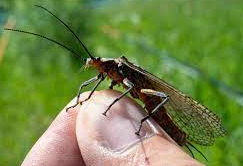
Stonefly
|
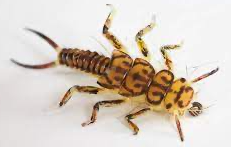
Stonefly Nymph
|
Knots BACK TO TOP
• Tying line to your hook - Clinch Knot
• Tying two lines together - Surgeon's Knot
• Creating loop at end of line - Surgeon's Loop
•
Just before you tighten the knot, moisten with saliva.
• Practice tying these knots!
Knots PDF
• BEST Knot Tying Phone App - Bear Essentials Outdoors Co. - Knot IQ
Videos (Instructional) BACK TO TOP
Casting BACK TO TOP
- GOAL: "Get the fish to take your fly by stealthily presenting what acts and looks like the food the fish are currently eating"
- Your leader should taper down to the tippet (thinnest part) which will most likely be between 4x and 7x and be about as long as your rod. A 9 foot rod (most are) should have about a 9 foot leader. Your tippet portion should be at least 2 feet in length.
NOTE - You might want to try ~12 foot leaders with 3 foot tippets on the Metolius and Fall Rivers where the fish 'spook' easy.
- Having the correct leader is the MOST important part of fly fishing!
- Stand slightly sideways (so it's easy to see behind you, which is important until you really get the hang of proper casting)
- Grip your rod like you are shaking hands with your thumb on top at the end of the cork.
- The basic cast is very similar to 'throwing a dart' or 'hammering a nail' or 'throwing a paper airplane'. No more arm action, arm distance traveled or force than that!
- Always start (and finish) your cast with your rod tip just above (or just touching) the water (below your belt!)
DO NOT START ABOVE YOUR WAIST!
- Start slowly and build up speed gradually.
- Keep you elbow stationary (it's the fulcrum), get the line moving before drawing back to begin your backcast. Imagine you are facing a clock where straight overhead is12 o'clock and straight below is 6 o'clock. Begin with your starting position at at @7 o'clock position with your rod tip just above (or just touching) the water and begin to slowly raise your rod.
- By the way, ALL clock reference positions REFER to the position your thumb should be pointing.
- You accelerate your rod from the 10 o'clock to 1 o'clock, stopping (briefly!) at the 1 o'clock position. You should 'break' your wrist as you finish your upcast and this will allow your line to fully extend behind you.
Standing sideways allows you to see exactly how long it takes for your line to fully unfurl above and behind you.
- ONCE MORE: As you slowly draw the rod up, your fishing line will begin to move towards you. Continue moving up and into the air with the majority of your energy should happening between 10 o'clock (fairly high up and in front of you) and 1 o'clock (up and behind you). STOP BRIEFLY to let your line fully extend behind you and then 'relax your wrist' (break it - a little snap) ... stop, drop (your wrist), and roll (forward)!
- Then start your downcast - again, with the majority of energy between 10 o'clock and 1 o'clock , and again 'breaking' your wrist - slightly napping your line at the 1 o'clock position. (where you would 'release the dart or paper airplane' or 'hammer the nail!')
- At this point, you can either...
-
Repeat the upcast and downcast as many times as you wish (1 o'clock to 10 o'clock to 1 o'clock ...). THIS IS CALLED FALSE CASTING. Experienced fly fishers usually only do this one time generally leaving false casting only for those times when they want to dry out their fly.
OR
With diminishing energy after the downcast wrist 'break' at @1 o'clock, finish your downcast and lower your rod to just above the water at about the 7 o'clock position (below your belt!) and begin fishing -- you are hoping for a very delicate presentation as the tippet and fly land in your target zone so as not to spook any fish.
- AFTER EVERY CAST - PUT YOUR LINE UNDER YOUR INDEX FINGER
- THINK: You ARE NOT casting the fly line ... You ARE casting the leader and fly!
Your upcast and downcast between the 10 o'clock and 1 o'clock positions should be AT THE SAME ENERGY AND TEMPO and your upcast and downcast before and after reaching the 1 o'clock position should also be similar energy and tempo.
- REMEMBER: DO NOT MOVE YOUR FULCRUM POINT (YOUR ELBOW)
- Once your line and fly are on the water, you can 'strip your line' by using your left hand to grab the line behind your index finger and pull in segments. This may attract a fish and then if you want to 'shoot the line' you simply upcast and on the downcast - at the 10 o'clock position - you release your tight grip on the line (keeping it loosely 'cupped' in your left hand) - and the line you stripped with go back out. 'Hammer the nail' and THEN release your grip on the fly line!
- If you cannot backcast (obstruction/tree etc.) then you can roll cast. You simply bring back your rod slowly to the 10 o'clock position, let the line come to a stop, and then do a normal downcast. Give it a try and then practice!
- PRACTICE, PRACTICE, PRACTICE!!!
- YOU CAN MORE EASILY LEARN CASTING BY PUTTING ONE KNEE ON THE GROUND, BENDING THE OTHER KNEE, AND USING THE BENT KNEE LEG TO SUPPORT YOU ELBOW. THIS WILL HELP YOU LEARN TO KEEP YOUR ELBOW STATIONARY AND ALLOW YOU WATCH YOUR BACKCAST COMPLETE SO YOU CAN BETTER UNDERSTAND HOW MUCH TIME YOU NEED TO STOP AT THE COMPLETION OF YOUR BACKCAST.
- ADVANCED CASTING
- The 'roll cast' is extremely important if you don't have room behind you to cast. Leaving your leader on the water slowly bring back to about the 1 o'clock position and then move your rod quickly forward, pointing your thumb at your target spot.
- The 'double haul' ... what?! - - This is an advanced casting skill you should consider only AFTER you are totally comfortable with the basic cast. It is especially helpful if you are casting longer distances or if it is windy.
- A double haul will increase your line speed and allow you to cast farther, faster, and cast more effectively in windy conditions. NOTE: it is difficult to explain or master so here are a couple of handy links:
- Written summary: tinyurl.com/readdoublehaul
- Video summary with training drill: tinyurl.com/watchdoublehaul
Gear BACK TO TOP
Equipment Setup
- Rod / Reel / Fly Line
- FYI, your reel's "DRAG" should be set so that your line has sufficient drag to not 'spool out
- When you put your rod together do it from the far end and not the handle. Insert pieces about 1/4 off center and twist clockwise to better seat
- Leader / Tippet - Even if you already have a leader / tippet attached, here's some helpful info:
- The leader is the last part of the line, comprised of one or more pieces of mono-filament, ending with your fly.
- Your total leader should be about the length of you fly rod - most fly rods are 8 or 9 feet long and should have 7 to 9 foot leader -- either a single 'tapered leader' (commonly available everywhere) or a 'sectioned leader' (hand-built)
- A 'sectioned leader' normally consists of the butt end (closest to fly line), mid-section or sections (optional but preferred, in ever smaller diameters), and finally the tippet (where your fly/hook is attached)
- Tippet higher #'s = thinner diameter ... 7x thinner than 5x.
- The tippet size should match as closely as possible to your fly / hook size (higher # hook size smaller the hook)
- Hook size / 3 or 4 = suggested tippet size
- 6 hook = 1x or 2x tippet
12 hook = 3x or 4x tippet
16 hook = 4x or 5x tippet
20 or 22 hook = 5x or 7x tippet
24 hook = 6x or 7x tippet
- TIPPET SIZES:
- 0x = .011
2x = .009
4x = .007
5x = .006
6x = .005
7x =.004
- NOTE: Packaged leaders are almost always include 'pre-tapered' tippet.
- You can look up / buy hook charts which help you easily determine hook size and the matching tippet line size BUT here's the skinny:
- Trout tippets are most often 4x to 6x with hook sizes 12 to 22. A 4x tippet would need fly's with hooks in the lower # range (larger) where as a 6x tippet would need fly's with hooks in the higher # range (smaller).
- There are a lot of choices and there are no hard and fast rules. Easily spooked trout may need a smaller 6x or 7x line with small hooks (16-24) and Bass, Steelhead, and Salmon would need larger lines (3x to 0x) and larger hooks (sizes 1 to 12).
- For most trout, a 4x or 5x line works for hook sizes 12 to 18
- To tie fly onto tippet --- place tippet alongside eye of hook and draw back until tippet 'pops' into the eye
- FYI, typical streamer leader sections -- .013 -- .015 ... ending with a .020 tippet
- Brian Flechsig of Mad River Outfitters (checkout Fishing Video section) breaks down 6 must have accessories for beginner fly-anglers.
- Nippers
- Hemostat
- Fly Floatant
- Split Shot
- Strike Indicators
- Polarized Sunglasses
- ...beyond Brian's list, I would bring at least one or more of these dry flies: 'Adams' or 'Parachute Adams', 'Blue-winged Olive', and 'Elk Hair Caddis' ... and if you want to try nymphs - a 'Yellow Sally' or 'Black Zebra Midge' ... for streamers, try a brown or tan 'Wooly Bugger' ... and a hat!
- If you fish a lot, here are some other items you might consider:
- Griffin hook and hackle gauge
- Tippet spools (2x...4x...6x...8x)
- Rio Flexline Cleaning kit & dressing
- Sim's Guide Lanyard - for your nippers
- Manly Nipper Gripper
- Fishing Butlers
- Fishing Reel Pouches
- Rio Leader Wallet
- 'Frequency' sink tip line and maybe an entire extra setup just for nymphs & streamers
- 'Costa' sunglasses: Suncloud #2 green mirror or Sunrise silver mirror - glass is best
Equipment Care
- Stretch' both your fly line and leader periodically
- Clean and lubricate your line regularly ... see Internet videos
Tips BACK TO TOP
- Best Time of Day for Fishing
- Spring - In the springtime, the best time of day for most fish tends to mid-morning and late afternoon in early spring and early morning and late afternoon towards the end of spring.
- Summer - In summer, the best times of day to fish by far are early morning from dawn until 2 hours past sunrise and late afternoon from 3 hours before sunset until dusk.
- Fall - During the fall, the best times of day to catch most species of fish is early morning and late afternoon.
- Winter - In the winter, wait until mid-morning to start fishing for the best results. Fishing in the mid-to-late afternoon is usually very good as well.
- Rain, Snow, Clouds - Rain and clouds can bring about great trout fishing and some of the best fly fishing for trout occurs right before and during a steady rain event.
- Metolius River Info & Tips
- 'Great Fly Fisherman' magazine article on the Metolius (PDF download)
- Fly Fishing Guide to the Metolius River: The fish are wild and difficult to fool. When the fish see a fly, they see it with only the lighting conditions affecting it. Use long, light leaders and tippets. You will need to use 6x and 7x tippets that are three and four foot long often.
- When you can see the trout, they can most likely see you. Now that said, understand the best, most effective way to catch a trout from the Metolius River or any other spring creek that flows smooth, is to first spot the fish. You have to do that in such a way as not to alert the fish of your presence, either by sound or sight. In other words, the key is to stalk the trout. This must be done very carefully. Remember that trout cannot see objects low to the horizon due to the refraction of light. The lower you stay, the better off you are. Get down and move along on your knees if you have to. The best way is to hide behind something.
- The other big key is to fish the hatches. When trout are feeding on hatching insects they are occupied with that. Catching them is much easier than just offering them something when they are resting. Knowing what is about to hatch is very important. If nothing is hatching, then you want to be fishing imitations of what is going to hatch next and what is most plentiful and available for the trout to eat.
- The last key I will mention is that when the water is flowing smooth and undisturbed on the surface, it allows the trout to see your fly much better.
- If you concentrate on fishing the current seams and the riffles and runs when you can find any, you will increase your odds. Anything in the water large enough to change the speed and flow of the water will create these current seams such as tree tops, grass lines, etc. The smoothest, slickest places on the river are the most difficult to fish. However, if the trout are feeding in such places, you need to fish there. That is where the long, light leaders and tippets come in. The best situation is to find a feeding trout or one that is rising to sip insects near or on the surface. If they are not rising and they are feeding on something near the bottom, watch for their white mouths to flash. That tells you they are eating something. Needless to say, when you do find a feeding trout, you must make drag free presentations. That does not only apply to fish on the surface, it applies to feed feeding beneath the surface also. A nymph coming down the stream on the bottom at a speed faster than the current is flowing on the bottom will only spook the trout.
- The most important mayflies to hatch on the Metolius River are the Blue-winged Olives. They start as early a January and last through most of June.
- Caddisflies are very plentiful on the Metolius River. The Spotted Sedge is probably the most plentiful with its several species. The most important stage of life of the Green Sedge is the larva stage. They are imitated with what is usually called 'Green Rock Worms'. These can be very effective on the Metolius.
- Golden Stoneflies can hatch from the middle of June until the middle of September. Imitations of their nymphs work year-round. The Little Yellow Stoneflies - called Yellow Sallies - hatch from the middle of June to the middle of August.
- Terrestrial insects are on the Metolius River available for the trout to eat from the middle of June through September. Imitations of beetles, ants and grasshoppers all three work great during this time period. Midges hatch throughout the year and trout can be taken on imitations of their larvae, pupae and adults most anytime of the year, but the most important times are when no other large insects are hatching.
- More to be added...
BACK TO TOP
